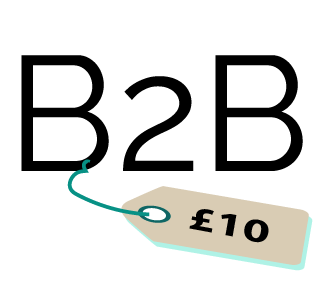Most people think they rely on cold hard logic to make every decision in their life. What they eat, how they dress, which music they listen to, what careers they choose, etc
However, unless you’re a cyborg straight out of sci-fi movies, every human decision is influenced by not logic, but emotions. Anyone who believes otherwise is only deluding themselves
And for this reason, stories are great for selling
Stories communicate information in a highly specific and emotional way. They are easy to remember, and they give us something we can relate to as listeners or readers.
Statistics are cold hard facts, with no emotions — but stories can convey the same points and make your audience care and get emotionally invested.
When it comes to building a great marketing campaign, storytelling is an essential building to ensure success, and as a business, it’s a skill you’ll want to master.
Why is storytelling essential?
Throughout history, human connections have been made through storytelling.
In fact, stories have been the ideal vehicle to pass down knowledge and ideas for thousands of generations.
When it comes to your business, it shouldn’t be anything different. So when you’re building your brand, selling a product, or educating your audience, stories are the building blocks to true human connections between you and your customers.
There’s a whole slew of psychological effects that happens inside the human brain when we listen to a highly emotional story, we become more engaged, and we pay more attention.
For this reason, storytelling has been proven to be the best way to engage the mind in a way that no facts or stats alone can.
It’s the proverbial magic bullet that marketers have at their disposal to let their audiences to see themselves in the experience, rooting for the hero through emotional attachment.
You can Explain your Ideas in an Exciting Way
While pitching your business’ offerings to a potential customer, you need to send out a message that is short, exciting and clearly explains the benefits of your product.
If it’s too long, you risk making your audience bored and turning them off.
Stories help you break down ideas into more straightforward and more exciting parts without boring your audience.
Stories can also help you explain your product’s benefits clearly, so they are easy to understand.
For instance, if you’re marketing a smartphone that is waterproof, you can share a story about how a customer damaged his phone in the rain, and how your smartphone helped him get rid of this problem forever.
You can create emotional attachments
How can you make your customers feel they’re part of your brand? By telling stories that they can relate to, of course.
When you tell relatable stories to your audience, you can stir their emotions and create a strong bond between you and them.
Stories that are related to family life, struggles, relationships and success touch on topics that almost anyone can relate to, and they are ripe with emotions.
However, you need to understand what are the emotions that appeal the most to your audience, as well as the most relevant to your brand.
Stories build your brand
Stories help to shape the image of your brand and lends your brand credibility.
Your audience can see what the core values that your business holds near and dear, allowing you to build a persona of your brand are.
For instance, TOMS Shoes used storytelling in their “One Day Without Shoes” campaign to great success. Now it has become an annual event for the company.
The heart-warming story inspired many to support the brand’s idea of donating a pair of shoes to needy children.
With storytelling, TOMS Shoes has successfully positioned itself as a socially conscious and responsible company.
What makes a good story?
There are many different theories and formulas you can find that can help you make a good story.
But here’s the thing, stories are subjective. But there are still a few key components that you can find in any great storytelling experience. Good stories are:
- Entertaining – Good stories keep the audience hooked from the beginning to the end, and keeps them excited for what comes next.
- Valuable – Whether it’s to teach something new or to make you laugh, a good story provides something useful to its audience.
- Universal – They can be relatable to a diverse variety of audience because it touches on universal emotions and experiences.
- Structured – They follow a structure that is easy to follow and doesn’t leave the audience confused.
- Memorable – They stick on to the reader’s mind for a very long time.
Three ingredients make up any good story:
The Hero – This is the term that is commonly used to refer to the main character of the story.
Who he is, what is his background, what are his motivations, etc. These are all key ingredients that make your character likable and relatable.
The Journey – This is the meat of the story. The journey path that the hero takes to achieve his goal. The goal is something that is powerful enough to motivate the hero to make the journey.
Throughout the journey, the hero will encounter trials and tribulations. The hero will struggle and fight or falls from grace. Sometimes he overcomes the challenges and comes out stronger, sometimes he doesn’t.
Along on his journey, the hero may encounter characters. They can either be friends and mentors that helped him along his way, or they can be enemies that sabotage his journey with their villainy.
The End – This is arguably the most essential part of the story: having a closure. The end lets the audience get their gratification for going through with the story along with the writer or narrator.
Whether it’s a lesson, a funny story, or even a rhetorical question, the audience needs to walk away from the story feeling satisfied.
With these 3 main ingredients, you can swap out elements of your story and build your own powerful and emotionally driven story for your marketing needs.
How to Create a Story for your Marketing Campaign?
While you can build up your brand’s legacy and image by telling a story about how you, it works far better when you make the hero of your stories about your customer.
After all, your business is all about them.
They are the reason your company exists, and the reason you’re are providing a product service as solutions.
With stories you can engage your audience, make them see themselves in it, struggling with a problem they need to resolve.
Relevance is key here, and the best way to make your audience feel relevant is to create a hero based on your customer’s persona.
Pick a problem or motivation that your audience can relate that can set the hero on his journey.
This problem can serve as the villain of the story. It’s the brick wall stopping your hero reaching his or her goal.
Remember to flesh out your hero’s backstory too. His backstory is what leads up to your hero’s motivation to take the journey to solve his problem.
Stories always start with conflict. If everything were smooth sailing, there wouldn’t be a good story.
But as soon as tension or roadblocks is impeding your hero’s journey towards his goal, then you’ve got the makings of a good story.
Conflict and tension are what draw people who can relate to your hero —like your audience —into the story.
An example of a simple backstory:
Chelsea is a successful young woman in her early 30s. She has a great career as a senior executive in a global advertising firm and owns an apartment in London. She loves her family and friends, especially her mom, who has been the pillar of strength throughout her life.
But there’s one aspect in Chelsea’s life that isn’t going so well for her. She hates that she is fat, and she feels that it is affecting her chances in finding a great boyfriend and tying the knot.
Her dissatisfaction and shame towards her body stemmed from her time as a child, where she would be teased by her classmates. She would go back home from school in tears, but her mother has always been by her side.
Chelsea feels now that she has accomplished everything in her life, she needs to tackle the next best thing: love. She knows to find someone she loves; she needs to feel confident with her body first.
She has tried various dieting plans, but they failed miserably, and she found herself going back to eating pizzas and burgers. She has also attempted multiple fitness routines and workout techniques, but they are hard to follow, and she found herself too drained for work the next day.
What I’ve just written is a simple backstory about a hero who is struggling with weight issues. If you’re a business owner of a gym or a workout instructor, this would be a story you would tell.
But where does your business come in? Simple.
Introduce your business as a ‘mentor’ type character. Give the hero new information, insights or tools that he didn’t have previously, and help him reach his goal.
Remember, in this story, your business or brand is the mentor. You are only the supporting character, not the hero.
It’s only with storytelling techniques like this where you can help the audience make themselves feel that they are part of the story, and see how your business can help them achieve their own goals.
How to draft your story
Once you have an outline of the hero’s backstory, you can start developing ideas for how your brand can write the story.
Using the above backstory as an example, if you are a personal fitness instructor, your list of ideas may look like this:
- Having a conversation with Chelsea about her goals regarding weight loss, understanding her problems (such as being unable to follow through her diet plans).
- Looking at the gaps in her fitness and diet plans, then coming up with deep insights to help her understand how to improve her outcomes.
- Working together with a nutritionist to help develop a diet that will help Chelse shed her kilos without leaving her to feel
- Crafting a fully customized workout plan that is specifically targeted for Chelsea to ensure she can fit it into her busy work schedule.
You’ll need to plan out your ideas, then work each idea into your story as chapters.
The angle of the overall content should mirror your customers’ own progress in the buyer journey, and ultimately achieve their goal.
As you tell your story, you need to evolve the context along with your narration too.
That’s because you’re the hero has already learned much from you along the way. You’re your hero evolves, it shows progress.
And just like watching your favourite TV series, there should always be a sense of continuity between each chapter, or your audience will feel lost if they did not follow your story in order.
Ensure that your story always connects to a next step to build up anticipation for what comes next.
Never lose Focus on Your Customers
There are several storytelling angles that you can take to help persuade your audience, build the trust and credibility they need to become customers.
After all, making a purchase requires a ton of information and confidence before arriving at a decision.
With storytelling, you provide the opportunity to support your persuasion and use powerful emotions to help you in every step.
But remember, none of your stories this should revolve around your business or product as the hero. The star should be your audience, you are just a component in the grand scheme of things.
In conclusion
Storytelling allows marketers to build a deeper connection with the target audience.
Storytelling is a fundamental human experience that unites people and drives stronger, deeper connections.
From the earliest recorded history, storytelling was a method used by cavemen to communicate, educate, share, and connect.
As an example, think about Suburu’s ads which communicate “love” through a series of ads that establishes the car brand as a symbol of caring for those you love.
Whether it’s a father caring for his son or daughter, or a parent caring for their beloved pet, the series of ads are more about what the brand represents to the family than the horsepower that the car delivers.
By communicating the brand through stories, Suburu is able to elevate the meaning of the brand and better crystalize how it fits into customers’ lives.
When creating your brand story, if you do nothing else, make sure that your story appeals to your audience.
Spend some time profiling your customers; it’ll pay off big time.







